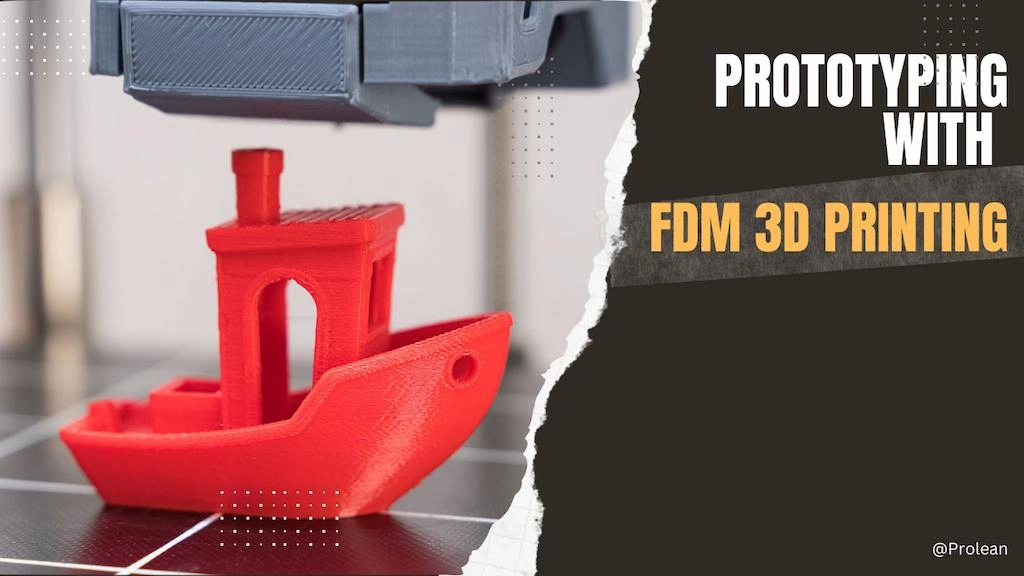
3D printing technology has become more popular in prototyping and production. Medical, automotive, robotics, consumer, and many other industries use 3D printing techniques like Fused Deposition Modelling(FDM) to make testing prototypes.
If you have unique product designs or optimization of existing products, this technology can convert the concepts into functional shapes quickly. So, you can test, iterate, and refine to get a competitive edge in the market.
This article will cover what is FDM 3D printing, the process of making prototypes with FDM, material options, and tips on outsourcing the prototypes from a secondary manufacturer.
Let’s get started.
What is FDM 3D Printing?
Fused Deposition Modeling(FDM) is an additive manufacturing technology that creates 3D solid models through precise deposition of molten material in a selective path. This method is heavily used in visual and testing prototypes across industries.
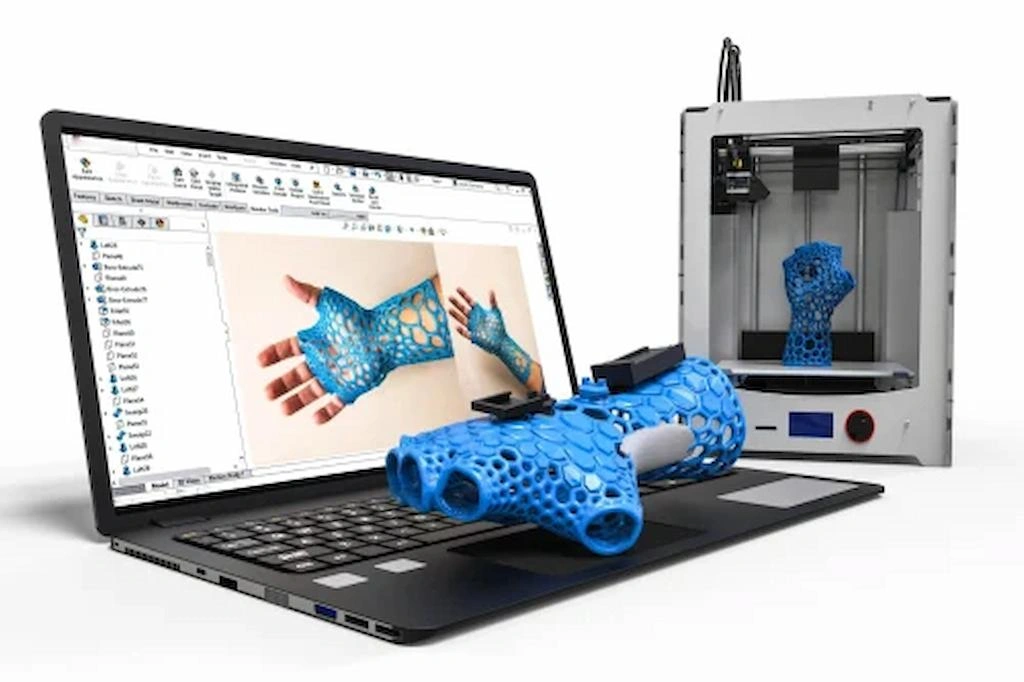
FDM prototyping
With an FDM 3D printer, Computer-Aid 3D models can quickly be transferred into physical form. First, printing software converts the designs into different slices. Then, printers build the object on the printing bed by adding layer over layer, following that slice and path.
Before moving into the working mechanism of the FDM, let’s look at the standard structure of an FDM printing machine;
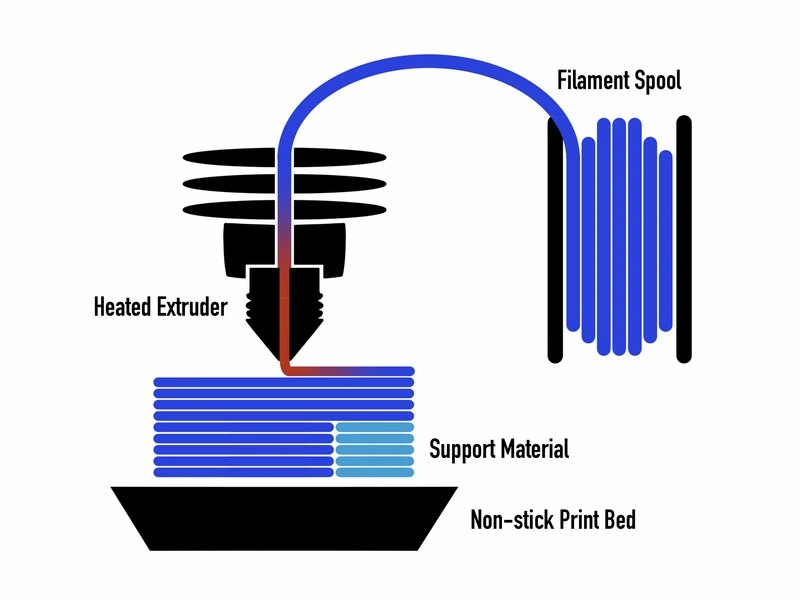
FDM 3D printing Process
- Filament Coil: The material coils of printed material, 3D printing grade is different from ordinary material.
- Extruder: It takes the material coil, and the heated filament melts before passing into the nozzle.
- Nozzle: Nozzle deposits the melted material into the printing bed, and the extruder can move the nozzle along the X, Y, and Z axes.
- Print Bed: It is the non-stick plane bed where a designed prototype or product is built.
Try Prolean Now!
How FDM 3D Printing Works?
The steps below outline the chronological process of how FDM builds the 3D objects, from design creation to layer adding.
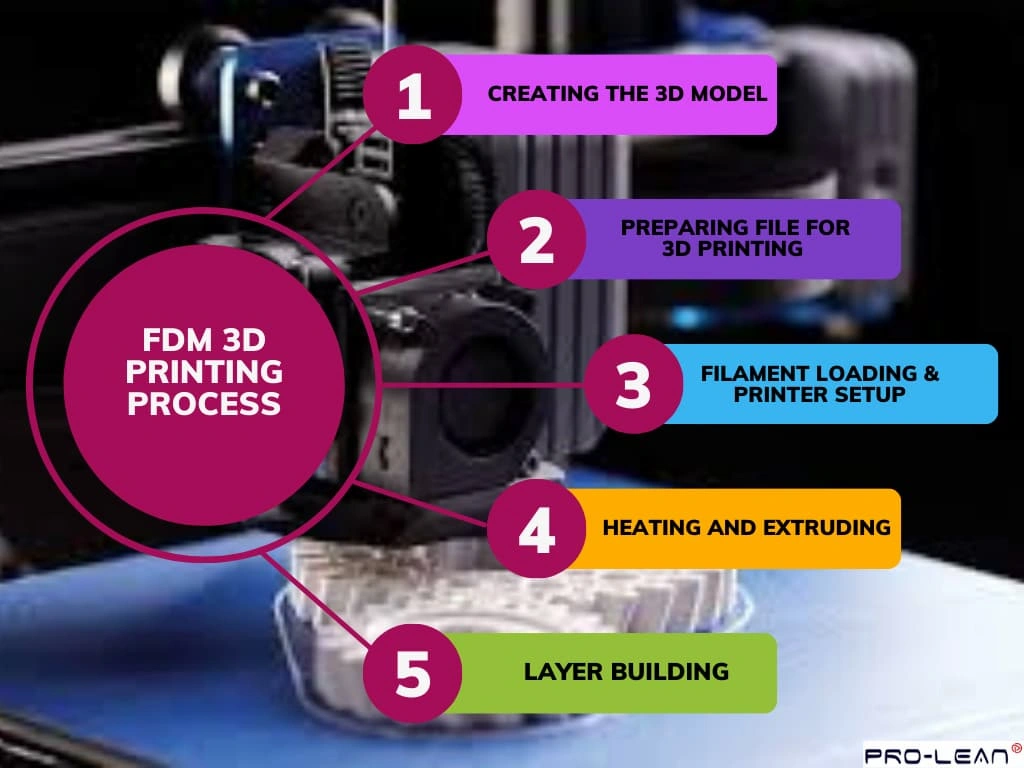
FDM 3D printing process
Step 1: Creating the 3D Model
It starts with making a 3D model of printing parts using computer-aid tools like AutoCAD, Fusion360, and Solidworks. The design must include all the geometrical and dimensioning labelling in compatible formats like .STL or .OBJ.
Step 2: Preparing File for 3D Printing
Next, slicing software converts into thin horizontal layers, which generate the G-codes to dictate the printing path. Here, the FDM printer understands the G-code and executes the process accordingly. Additionally, this file included other instructions, such as layer thickness, print speed, and temperature settings.
Step 3: Filament Loading & Printer Setup
Filament loading involves inserting the material coil into the filament spool, which holds the coil and supplies it to the extruder at the desired rate. Consequently, it is also important to align the print bed and nozzle.
Step 4: Heating and Extruding
The heating filaments heat the coil to the required temperature and pass through the nozzle. Meanwhile, the extruder pushes the coil into the nozzle continuously.
Step 5: Layer Building
The extruder moves along the Z axis (down) and deposits the layer(0.1 to 0.3 mm thickness) on the printing bed. Here, the path is controlled by the G-code file earlier. This layer deposition one above another repeats until the complete object is formed.
Step 6: Post Processing
After printing, parts are subjected to post-processing, such as sanding, painting, vapour polishing, etc. The reason is to form a smooth and uniform surface with the required appearance.
What Are the Benefits of FDM 3D Printing for Prototyping?
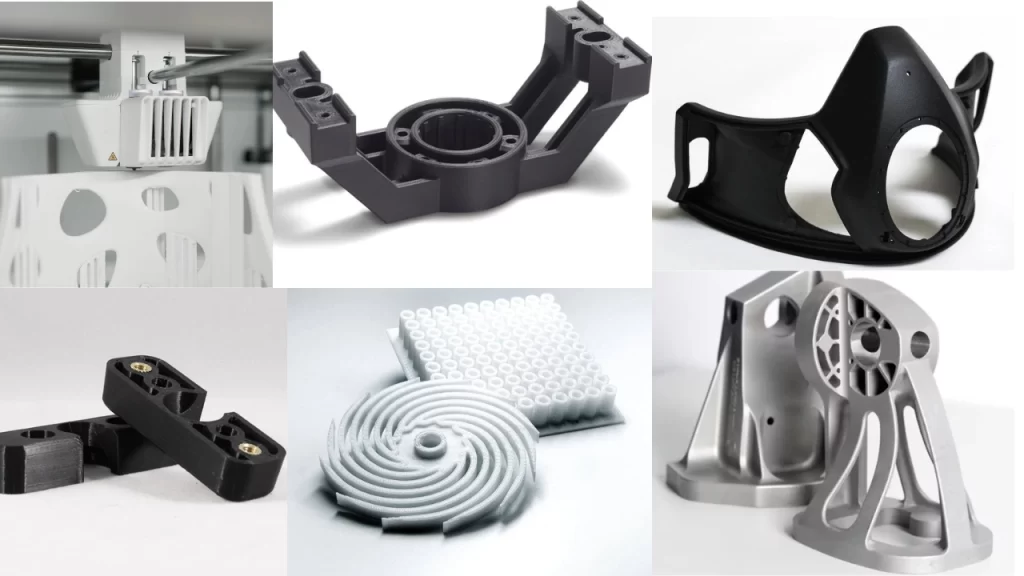
FDM printed prototypes
Quick lead times, cost-effectiveness, precision, and customizations are the main benefits of using the FDM 3D printing process for prototyping. Let’s discuss more about these benefits one by one;
Low Prototyping Costs
Among various 3D printing methods, FDM costs are relatively low. The raw material(filament) prices itself are lower than the material for other methods. Additionally, there is minimal tooling cost, and you can quickly adjust the printing parameters.
Complex and Detailed Prototypes
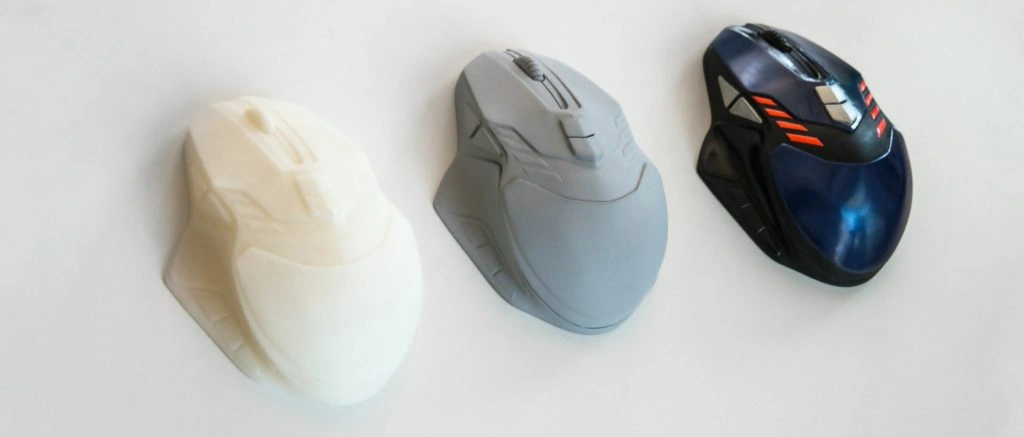
Custom plastic prototypes
FDM precisely fuses the material layers into complex shapes and geometries with multiple components; otherwise, it requires extensive assembly. You can easily form parts with thin walls, overhangs, interlocks, hollow structures, complex contours, and textured surfaces.
Fast Leads
The faster production speed of FDM printers allows them to make prototypes quickly and iterate multiple times. It also gives a competitive edge in the market. Simple projects are as quick as 1 to 3 days.
Diverse Color Options
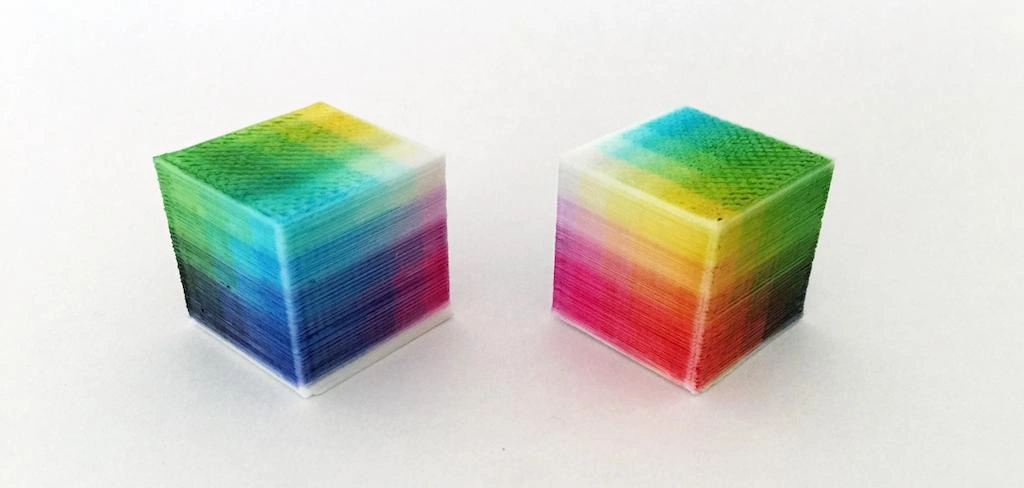
Multi-colored FDM printing
You can buy a 3D print material filament with the specific color you want. In the market, numerous filament colors are available. You can even pass filaments of different colors to customize the appearance of prototypes.
Material Versatility
You can print thermoplastics, composites, and metal filaments. Some common material filaments are PLA, ABS, Nylon, PC, PETG, Carbon fiber, bronze, copper, stainless steel, and iron-filled filaments. Here, plastic and metal printing require separate arrangements for printer setup.
Try Prolean Now!
Common Materials Used in FDM 3D Printing for Prototypes
Thermoplastics are common FDM 3D printing materials. But, based on the properties requirements for function testing, you can also use composites, metals, and other types of filaments.
The table below outlines the common 3d printing materials used in FDM prototyping;
|
Filament Material |
Key Properties |
Prototype Examples |
|
PLA |
Easy to print, biodegradable, low warping, glossy finish |
Concept models, display prototypes, toys |
|
ABS |
Durable, impact-resistant, heat-resistant, slightly flexible |
Functional prototypes, enclosures, gears |
|
PETG |
Strong, chemical-resistant, flexible, good layer adhesion |
Mechanical parts, containers, snap-fits |
|
TPU |
Flexible, elastic, abrasion-resistant, soft-touch finish |
Grips, seals, wearable prototypes |
|
Nylon |
High strength, wear-resistant, durable, slightly flexible |
Gears, hinges, load-bearing parts |
|
PC |
Robust, heat-resistant, transparent options |
Protective covers, high-stress components |
Choosing the Right FDM 3D Printing Service for Your Prototyping Needs
You need to choose the exemplary FDM 3D printing service to ensure the manufacturer can deliver the expected results. It is more important as outsourcing gives you little control over the actual production process.
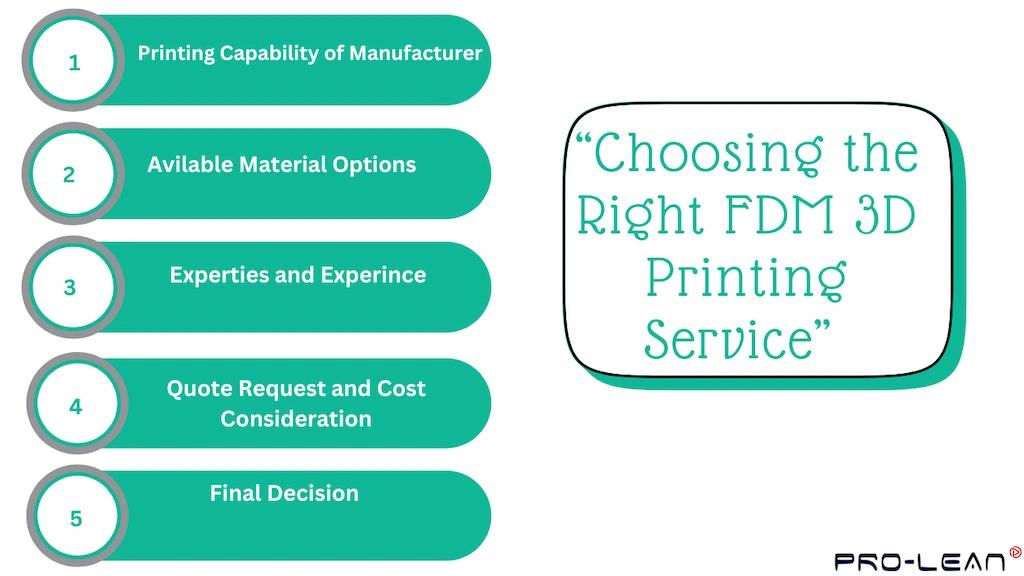
Factors for choosing an FDM prototyping company
The following are the key factors you can consider while looking for the right service provider;
- Printing Capability of Manufacturer
You can start by looking at the online portals of 3D printing companies, what kind of printers they have, what the build size, thickness limit, achievable tolerances, etc. It is crucial to ensure that the service can print your design size with all the necessary characteristics.
- Material Options
Identify the filament grade and other material selection procedures. Then, analyze whether the service provider can print the material you want or not.
- Expertise and Experience
Look at the testimonials to find out what past clients say about the services offered. Additionally, you can check whether the company has done a prototyping project similar to yours or not.
- Cost Consideration
After ensuring the service provider can print your designed prototypes, contact them for prices, or you can drop designs and queries on their websites for quotation.
“To Get a Quote from ProleanTech, drop your prototype design and other specifications here.”
- Final Decision
After getting quotes from multiple companies, compare them with the value they offer, including lead time. Then, negotiate and ask for further processing like contracts, NDA agreements, etc.
FDM 3D Printing vs Other 3D Printing Types: Which is Best for Prototyping?
Besides FDM 3D printing, other techniques like Direct Metal Laser Sintering (DMLS), Selective Laser Sintering (SLS), and Stereolithography SLA are also used in prototyping projects. These 3D printing types have their own advantages and disadvantages in producing prototypes…
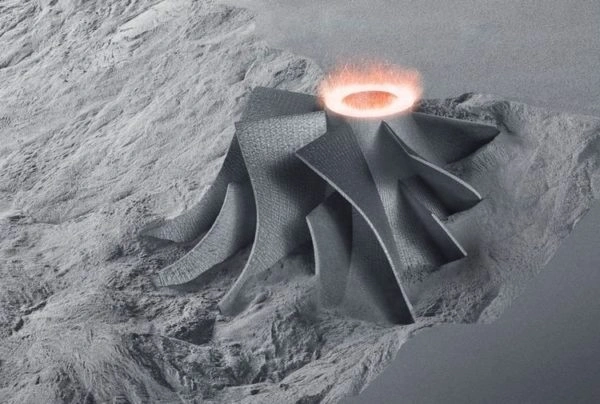
SLS printing process
The SLS technique applies a focused laser into the selective path to fuse the plastic powder into subsequent layers, one above another. In the process, all the layers are fused together to form the designed structure. SLS 3D printing is used for both function prototypes and visual models.
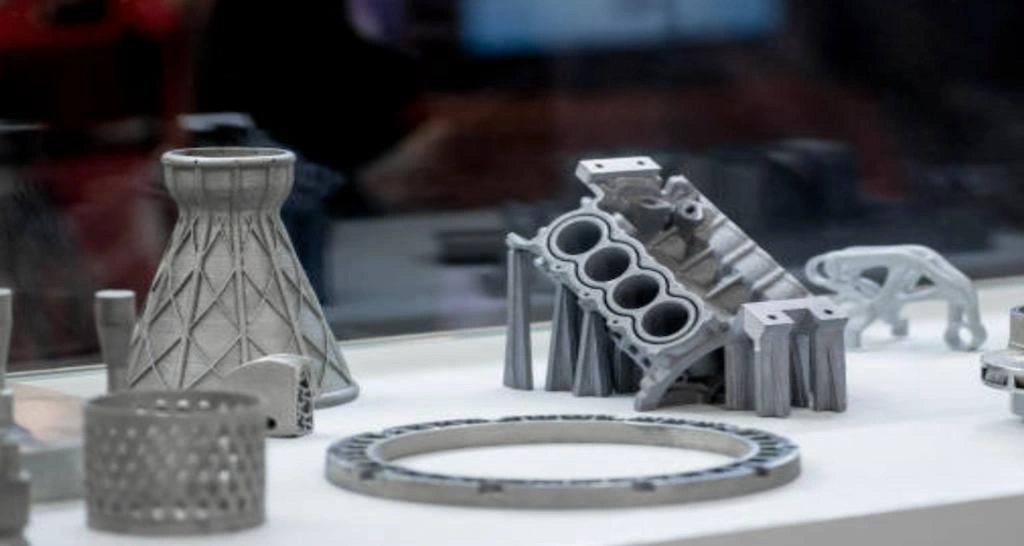
DMLS 3D printing
DMSL 3D printing has a significant role in rapid prototyping across the industrial sectors. It uses a high-voltage laser beam to fuse the metal powder and build the designed shape according to CAD’s information. This method can make even more complex shapes than FDM techniques but is limited to metal and alloy materials.
SLA 3D Printing
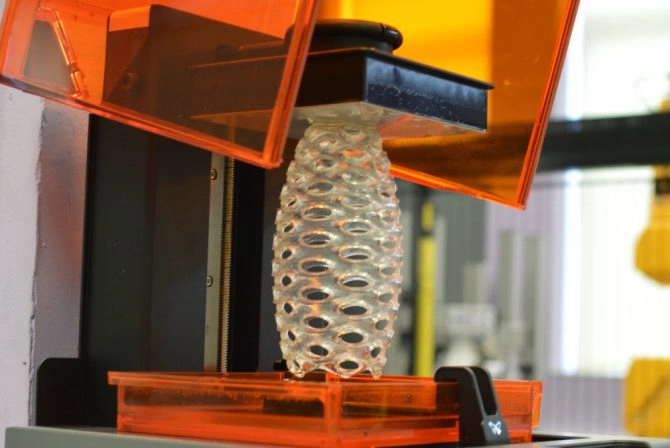
SLA 3D printing process
This 3D printing involves curing liquid resin by a laser into solid layers to form a detailed prototype. SLA prints smooth surfaces with excellent accuracy.
Next, the table below highlights the comparison of these technologies with FDM;
|
Criteria |
FDM |
SLS |
DMLS |
SLA |
|
Affordability |
✔ |
✔ |
✘ |
✘ |
|
Ease of Use |
✔ |
✔ |
✘ |
✔ |
|
Material Options |
✔ |
✔ |
✔ |
✘ |
|
Surface Finish |
✘ |
✘ |
✔ |
✔ |
|
Mechanical Strength |
✘ |
✔ |
✔ |
✘ |
|
Complex Geometry |
✔ |
✔ |
✔ |
✔ |
“ You can read a comprehensive comparison of 3D printing and injection molding for prototyping in article 3d printing vs injection molding here”
Cost Considerations for Prototyping with FDM 3D Printing
The cost of an FDM 3D printed prototype depends on many factors, including material type, complexity, size, and desired tolerances. Typically, the price ranges from $100 to $1000 or even more.
The following are some practices you can follow to optimize the cost associated with FDM printed prototypes;
- Optimize your 3D design for better manufacturability; you can adjust complex features and tight tolerances according to requirements.
- Printing multiple batches at once maximizes the printer’s efficiency and helps to lower the cost.
- Opt for draft-quality materials for prototypes that don’t require high strength or finish. Save premium materials for final versions.
- Use layer height up to 0.3mm if prototypes do not necessarily need the fine details.
- If outsourcing, you can opt for cost-effective locations like China to leverage extensive technological structures, innovations, and low cost for human resources.
Common Challenges in FDM 3D Printing and How to Overcome Them
Let’s look at the common FDM printing challenges and their prevention strategies;
- Support Failure
Often, printing parts fell on the print bed as the support was unable to withstand the part or due to the low contact area between printing items and the support structure.
→Prevention: Make enough contact area between part and bed.
- Material Waraping
The main cause of material warping is unstable cooling temperatures. This affects the structural integrity and accuracy.
→Prevention: Pre-heat the printing bed and maintain a uniform cooling environment.
- Clogging of Printer’s Nozzle
Some residues or even filaments can cause the nozzle to clog, which affects the desired material flow for adding layers.
→Prevention: Inspect and clean the nozzles before starting the printing process.
- Layer Misalignment
The main causes of misalignment between printed layers are loose belts, worn-out stepper motors, software errors, or unstable print beds.
→Prevention: Ensure slicing software is malware-free and calibrate the printer before starting the process.
- Parts Stringing
Multiple printing parts on the bed can be stringed together due to either setting errors or high temperatures at the edges.
→Prevention: Ensure proper temperature setting based on the material being printed.
Do you Need FDM Printed Prototypes? Contact ProleanTech
Getting high-quality prototypes to test & validate the design can be complicated, especially if you don’t have your own 3D printing Facility. However, the good news is that ProleanTech provides custom prototyping solutions for designers and companies worldwide.
Our 3D printing service includes FDM, SLS, SLA, and other technologies to transform your innovative designs into physical prototypes in a quick time. `
🗸 Design & Material Selection Support
🗸 ISO 9001:2015 Certified Quality Control
🗸 Wide Range of Geometries and Features
🗸 Quick Lead Times
🗸 Client-centric Communication
Summing Up
FDM 3D printing is suitable for both metallic and non-metallic prototypes but is preferred for non-metallics materials, as it quickly creates detailed and complex shapes based on CAD models. However, you must consider the design optimization, material selection, and all other details of prototypes before proceeding with it. Overall, FDM provides a balance of cost, quality, and lead time in prototype manufacturing.
FAQs
How Accurate and Durable Are FDM 3D Printed Prototypes?
Although the exact accuracy of the FDM 3D printed prototype varies on different factors, a typical tolerance is ±0.5% of the model. For instance, 0.05mm for 10 mm length. Consequently, the build quality is strong and durable.
What are the main benefits of using FDM 3D printing for prototyping?
Cost-effectiveness, quick turnaround, modification flexibility, and material diversity are the key benefits of using FDM 3D print technology for prototyping.
How long does it take to 3D print a prototype using FDM?
Once you finalize the design, the total time to 3D print the prototype is as low as one day.
Can FDM 3D printing be used for end-use parts?
Yes, FDM can produce end use parts for several applications, including Duct, brackets, healthcare products, consumer products, and sports items. However, they are only economically feasible for small batches.
What are the common issues with FDM 3D printing, and how can they be fixed?
Some common FDM printing issues are material warping, stringing, and weak layer adhesion. These can be fixed by optimizing the processing temperature and the use of high-quality filaments. Furthermore, regular cleaning of all components is also essential.

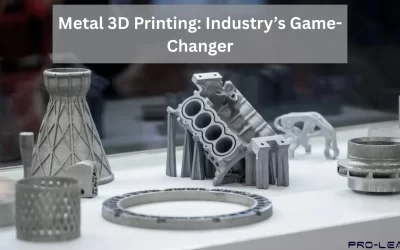
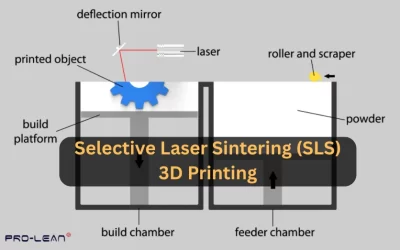
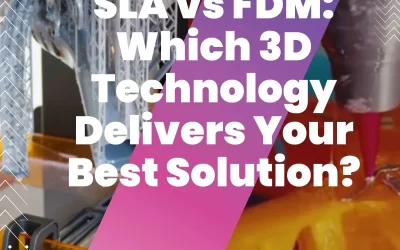
0 Comments